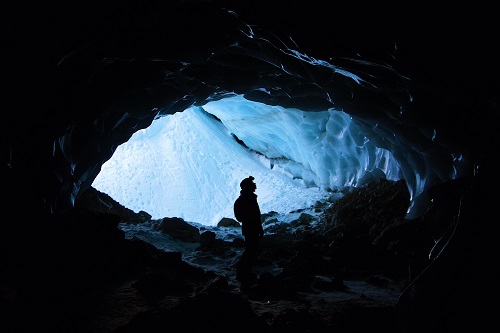Caves are a notable and integral part of our history through folklore, literature, and arts. Ages ago, people lived in caves and documented their beliefs, ideas, and lifestyles in artistic forms like drawings, sculptures, etc.
Paleoclimatologists (the scientific study of the climatic conditions of past geologic ages) believe that caves can help us unlock our future weather patterns.
Confined habitats such as mountain summits, oceanic islands, and lakes were commonly used to study the effects of climate change on biodiversity. Interestingly, scientists have been considering caves and other subterranean habitats in the past few years to decipher current climate change dynamics.
Three main reasons make caves an excellent environment to learn about climate change. Caves are semi-closed systems with remarkable thermal stability and are buffered from external variations, making caves a good natural laboratory to investigate past and future climatic conditions.
To study the changes in the climate, scientists examine the formations like spiky icicle-like rocks formed from the ceiling and bottom of the cave. The ones grown down from the cave ceiling are called stalactites, and those created up from the cave floor are called stalagmites. Collectively they are called speleothems and are formed by the running water.
According to Dr. Sebastian Breitenbach, a palaeoclimatologist and a member of QUEST (QUantitative palaeoEnvironments from SpeleoThems), “speleothems serve as excellent climate archives and are vital to understanding how climate varies and how the environment responds on seasonal to millennial timescales.”
For instance, an article titled Paleoclimatology: Written in the Earth Journal reported a slight growth of speleothems might indicate a drought. And the rapid growth of speleothems could anticipate heavy precipitation (rainfall).
Speleothems that have a dull appearance, dirty and eroded in places outside means the speleothems have stopped growing. A smooth and wet speleothem is a sign of growing speleothem.
Additionally, scientists use the thickness of each layer in the speleothem and date them, measure the concentration of carbon dioxide in the cave’s atmosphere, and use oxygen isotope ratios to prepare climate proxies.
In the North Eastern Part of India, researchers used the technique of oxygen isotopes in Mawmluh cave’s speleothems and found the chances of protracted droughts in the future. Researchers have demanded better policies for water resource management, sustainability, and mitigation.
As Anna Nele Meckler, a researcher at the University of Bergen says, “Climate change is quickly moving us into unknown territory, we urgently need to better understand how today’s climate system might react. At the very least, we can access past climate states and transitions and use this information to improve our ability to predict what lies ahead.”
Once these caves protected our ancestors from the unknown dangers of that time-animals and rough weather patterns. Once again, it is time for us to look deep into the knowledge of caves and learn to unfold our future weather patterns. The key to our climate action lies in the stored wisdom of caves and their mysteries.
——————————————————————————————————————-
Sources
- https://www.britannica.com/science/paleoclimatology
- https://core.ac.uk/download/pdf/302337538.pdf
- https://www.nps.gov/ozar/learn/education/speleothems.htm#:~:text=Speleothems%2C%20sometimes%20referred%20to%20as,familiar%20are%20stalactites%20and%20stalagmites
- https://www.sciencetimes.com/articles/6686/20150526/cave-deposits-may-help-predict-future-weather-patterns-on-our-warming-planet.htm .
- https://earthobservatory.nasa.gov/features/Paleoclimatology_Speleothems
- https://www.pnas.org/doi/10.1073/pnas.2207487119
- https://quest.pik-potsdam.de/
- https://ec.europa.eu/research-and-innovation/en/horizon-magazine/ancient-cave-deposits-reveal-our-climate-future




